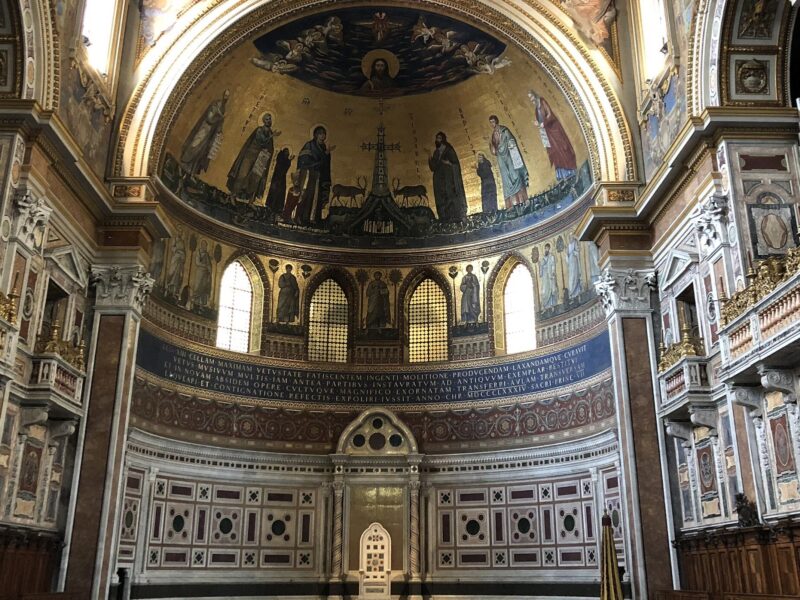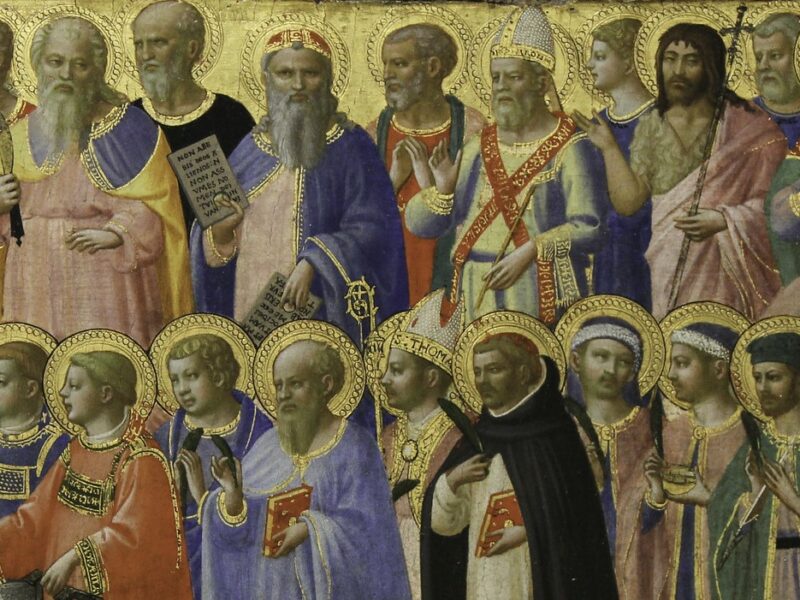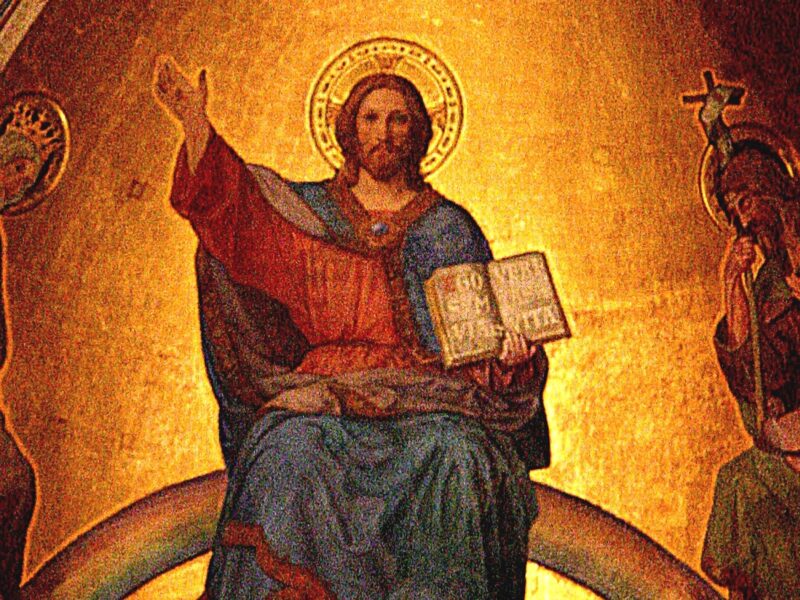
The Risen Lamb
The Ascension of the Lord. Fr Aidan Nichols shows us how Jesus Christ continues to be present to us after His Ascension.
ASCENSION DAY
One major reason for the Incarnation was to make our Creator, the divine Origin of the world, visible to us as a human being. Visible. ‘He who has seen me’, says our Lord to Philip, ‘has seen the Father’. To look at the humanity the divine Word took to himself at the Incarnation is to see an icon – a living, breathing, walking, talking icon – of what the Father, the ultimate Origin, is like.
Does this policy not fail us, though, when we come to the Ascension? After the forty days (not forty-three days, bishops of England and Wales kindly note), the risen Christ withdraws from what the physicists would call our space-time continuum. He goes to constitute a new set of co-ordinates for reality: the new creation, the cosmos or world-order of the Age to Come which by definition is not yet. He has gone from us, for whatever good reason of his own.
It would be strange, though, if that were all there was to it. Of course Pentecost reassures us that he has not left us in every sense. But he has, or so it would seem, left us in the sense relevant to that reason for the Incarnation from which I started out. God, or so it appears, has now abandoned the educational method he used when the Incarnation began. He has ceased to hold out to us an image of his humanly embodied self.
Or has he ceased? Actually, I don’t think so. On the contrary, as soon as the Holy Spirit was released at Pentecost he began re-constituting that same educational method – albeit in a new way.
What was the ‘new way’? It was when the Holy Spirit inspired the people we call the ‘hagiographs’, the writers of sacred Scripture and specifically the New Testament: a mixed band of apostles like Peter and Paul and ‘apostolic’ men like Luke, the co-worker of Paul. The Holy Spirit poured into their minds and hearts the charism of inspiration, and as a result these men, in giving us our New Testament, gave us thereby a stream of revealed images of Christ, the Father’s living icon in our midst.
Sometimes these images were taken from Christ’s own actions, or his own teaching, while he lived on earth, for had he not promised the disciples that the Holy Spirit would ‘call to mind all’ that he had ‘said to them’? But sometimes these images were, under the impact of this Pentecostal charism, freshly minted as the Spirit gave them utterance to tell forth how Christ is now in the Father’s glory.
I think here especially of a book we are often scared away from by its difficulty – a forgivable reaction since for the same reason the Greek church has, historically, not read it publicly to the faithful. It’s the Apocalypse, the final book of Scripture which is as climactic for the Canon of the Bible as the solemnity of the Ascension is for the ministry of Jesus Christ. Continuing the educational method begun at the Incarnation, the Holy Spirit poured forth images of God in Christ into the heart and mind of St John the Divine, the Beloved Disciple, the disciple who stands for all other disciples, the disciple par excellence.
There are two such images in particular on which I would recommend that we feast our minds. The first is the opening vision of the book when John hears a voice as clear (he says) as a trumpet, and when he turns to look at the source of the sound what he sees makes him faint. It’s the ascended Lord dressed as befits him in the clothing of both kingship and priesthood, for he is the royal Messiah, the vice-gerent of God, and he is also the priestly Messiah, the Mediator between God and man. The description sends a shiver down the spine. His eyes were ‘like a flame of fire’, his face ‘like the sun in full strength’. This is the God-man not in his humiliation, as on Calvary, or even in his vindication, as in the Resurrection appearances. It is he, but in his glorification – as if the moment of the Transfiguration had returned and become eternal. Which in fact it has.
This, though dramatic, is not yet, however, ‘the revelation’, the ‘apocalypse’ or ‘unveiling’ from which the book gets its names. The real ‘uncovering’ comes when, after receiving his initial instructions, a curtain is thrown back. John sees now an open doorway into heaven. It’s a door that opens onto the new space-time of the ascended Lord. And there at the centre of heavenly space he sees him again, but this time what he sees is a Lamb bearing the marks of its executioners’ blows. The lamb in question is not, however, flat out on an abattoir floor. Rather, it is a lamb that is standing, standing, we are expected to understand, proudly erect.
The Lamb that was slain and stands erect. This is, I believe, Scripture’s supreme image of the ascended Lord. It shows us, I think, something vitally important. In his Ascension glory Jesus is the Lord of love: the Lord of love. Not just, as we might be tempted to think, the Victim of love, though he is that too (‘greater love has no man than to lay down his life for his friends’). But more than that: he is the Lord of love. Yes, he is, it is true, the Crucified, but he is the Crucified as One who has been given all authority in heaven and on earth. He is not simply taking it lying down. Au contraire, he is reigning, and wherever love like his, sacrificial love, prevails on earth his Kingdom, which is the Father’s Kingdom, has already come. What about where such love does not prevail? What about what we call the ‘problem of evil’ in the post-Ascension world? All places, all times, are now by right his dominions, for all things are now his, so where love like his does not prevail is territory that can only be described as temporarily in enemy hands.
The message of the Apocalypse, like the message of the Ascension, is the sovereignty of God, the sovereignty of God in Jesus Christ, such that every power that is not yet in thrall to the Lord of love must in the end disintegrate and pass away. In an age of secularism such as our own, it is a message we desperately need to hear and to make our own.
Sorry, the comment form is closed at this time.



A Website Visitor
thanks fr. for your inspiration.